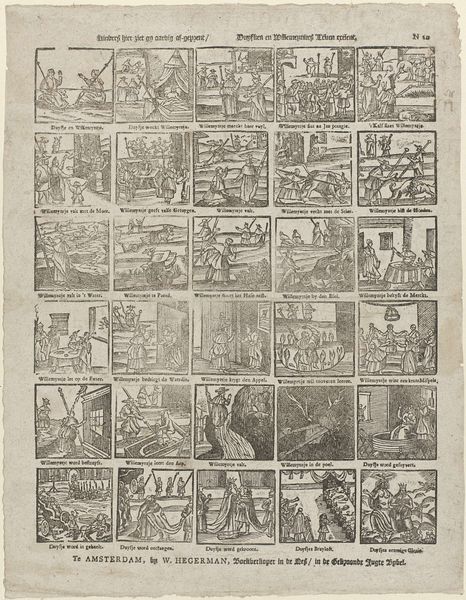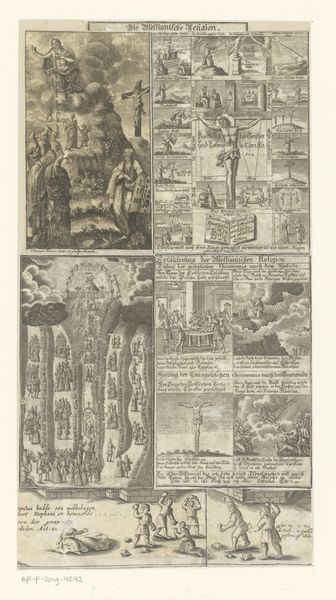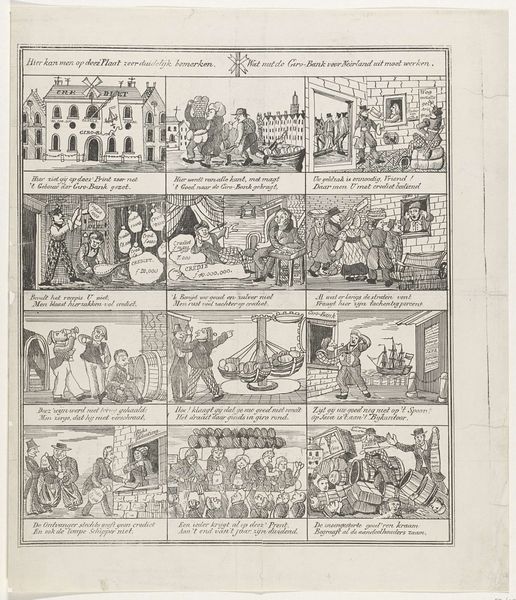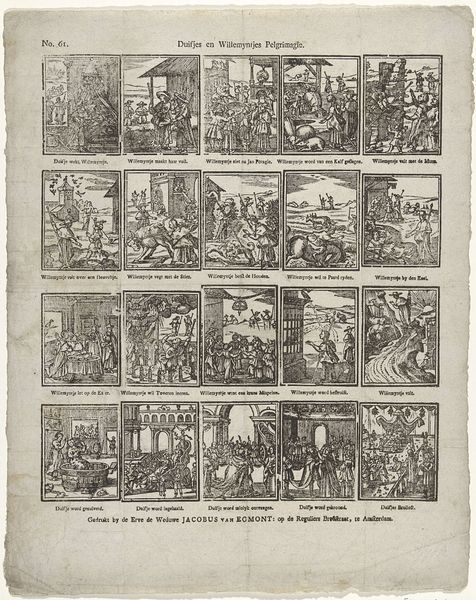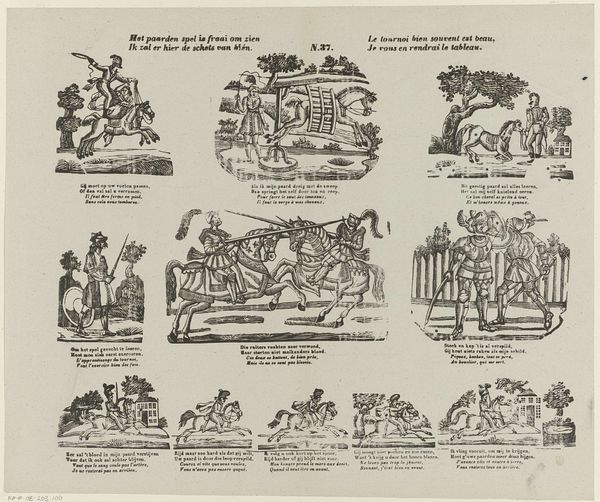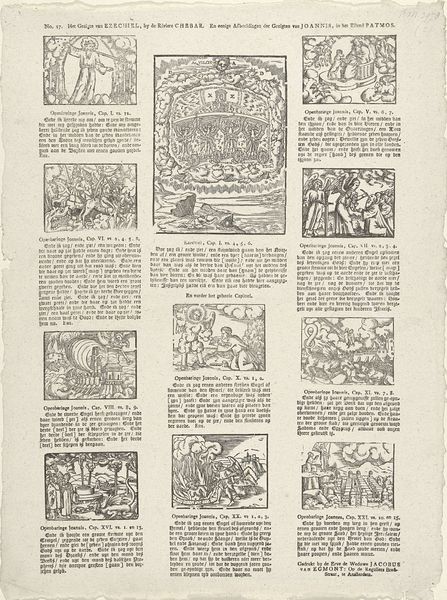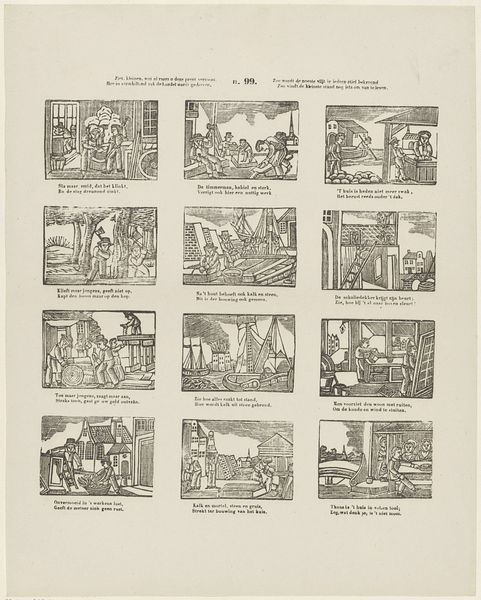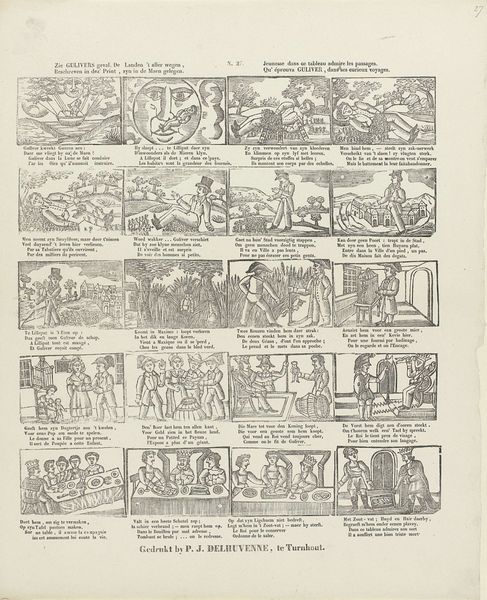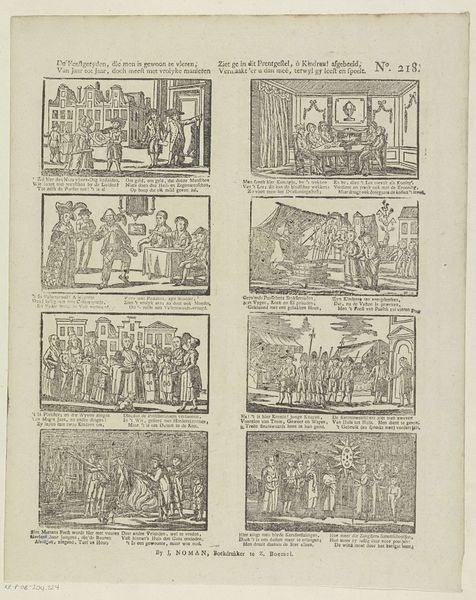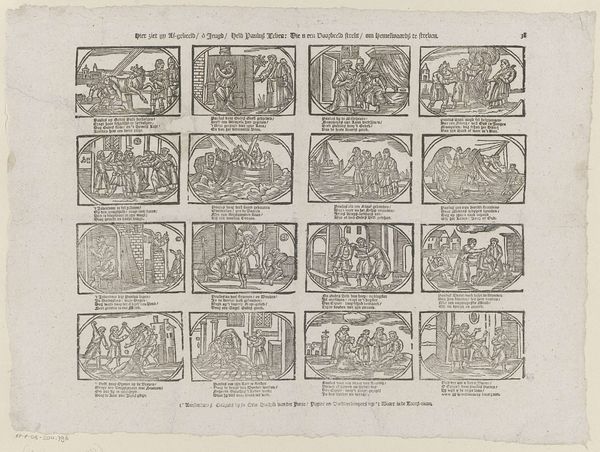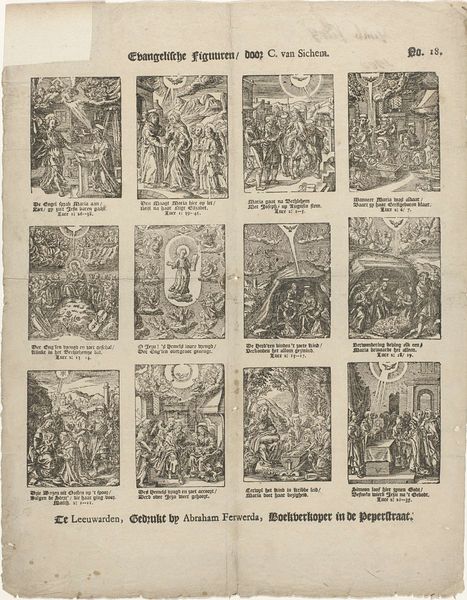
Zie Gulivers geval, de landen 't aller wegen, / Beschreven in deez' prent, zyn in de maen gelegen. / Jeunesse, dans ce tableau admire les passages, / Qu' éprouva Guliver, dans ses curieux voyages 1856 - 1900
0:00
0:00
Dimensions: height 420 mm, width 312 mm
Copyright: Rijks Museum: Open Domain
Editor: This engraving, "Zie Gulivers geval…," made sometime between 1856 and 1900 by Glenisson & Zonen, feels almost like an early comic strip depicting scenes from Gulliver’s Travels. I’m struck by the repetitive nature of the compositions and the varying perspectives, and I am very interested in better understanding what’s going on behind the scenes. What do you see when you look at this work? Curator: What immediately grabs my attention is the print's reproduction process. Considering its late 19th-century production, understanding the division of labor in Glenisson & Zonen’s workshop, including their specific materials—metal plates, inks, paper stock—reveals the socioeconomic factors influencing mass-produced imagery. Notice how the relatively unsophisticated carving enables affordable reproduction of a foreign fantastical tale, reflecting on printmaking as an industry transforming literary culture. How might the mode of production impact the reception of Swift's satire at the time? Editor: That's interesting. I hadn't considered how the *making* of the print directly relates to its broader impact on accessibility of stories like this. Could the ukiyo-e tag also offer clues? Curator: Absolutely. Though not strictly ukiyo-e in origin, recognizing that stylistic influence—the narrative focus and use of repeated motifs, linear designs and emphasis on scenes — illuminates the circulation of visual styles through global trade and its influence on European popular imagery. What does blending these global styles mean in a place such as Belgium? Editor: So, understanding *how* it was made helps unlock a much larger cultural conversation about art production and dissemination. I had not really looked at it this way before. Thank you. Curator: Precisely. Thinking through these material processes encourages a reading attentive to global exchange and production's impact on shaping cultural narratives. This transforms what we might overlook in similar imagery.
Comments
No comments
Be the first to comment and join the conversation on the ultimate creative platform.
